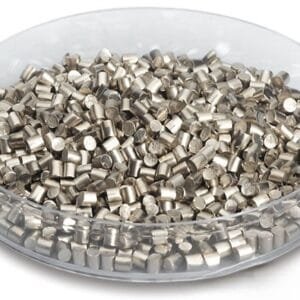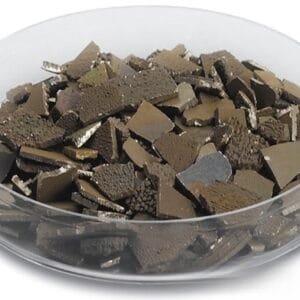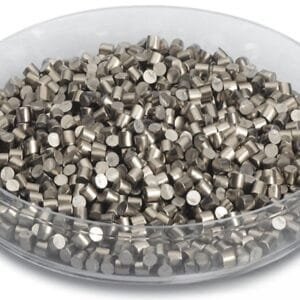Strontium Evaporation Materials Description
Strontium is a silver-white alkaline earth metal with a distinct yellow luster. As the second least abundant element in the alkaline earth metal group, following beryllium, strontium is typically obtained through the electrolysis of molten strontium chloride. It finds applications in manufacturing alloys, photocells, pyrotechnics, and chemical reagents.
In deposition processes, high-purity strontium evaporation materials are essential for achieving high-quality deposited films. TFM specializes in producing strontium evaporation materials with purity levels up to 99.9%, using rigorous quality assurance processes to ensure the reliability and excellence of our products.

Strontium Evaporation Materials Specification
| Material Type | Strontium |
| Symbol | Sr |
| Color/Appearance | Silvery White, Metallic |
| Melting Point | 769 °C |
| Density | 2.64 g/cc |
| Thermal Conductivity | 35 W/m.K |
| Coefficient of Thermal Expansion | 22.5 x 10-6/K |
| Synonyms | Strontium Pellets, Strontium Pieces, Strontium Evaporation Pellet, Sr Pellets, Sr Pieces, Sr Evaporation Pellet |
Strontium Evaporation Materials Application
- Deposition Processes: Strontium evaporation materials are utilized in various deposition techniques, including semiconductor deposition, chemical vapor deposition (CVD), and physical vapor deposition (PVD).
- Optics: They are also employed in optics for applications such as wear protection, decorative coatings, and display technologies.
Strontium Evaporation Materials Packaging
We meticulously handle our strontium evaporation materials to prevent any damage during storage and transportation, ensuring that their quality is preserved in their original condition.
Get Contact
TFM offers strontium evaporation materials in a range of forms, purities, sizes, and prices. We focus on producing high-purity e-beam evaporation materials with the highest density and smallest average grain sizes. For current pricing on evaporation pellets and other deposition materials not listed, please reach out to us for more information.

 MSDS File
MSDS File



Reviews
There are no reviews yet.